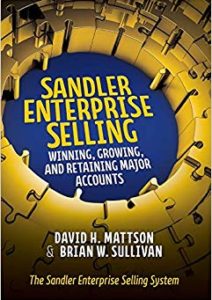It just popped up in your email, the message from the hotel where you recently stayed. They’re looking for your feedback through their survey and they’re asking for your satisfaction ratings in some very important categories they’ve chosen – food quality, staff friendliness, room cleanliness, shower cap durability, etc. An interesting list, but your room was next to the elevator and across from the ice machine – you didn’t sleep a wink. But room noise wasn’t on the list. Still a bit tired, you delete the email and remind yourself never to stay there again.
To think such an out-of-touch approach would be relegated to the B2C world would be, unfortunately, very short-sighted. For quite often, selling organizations in the enterprise world are equally tone-deaf.
Think about what often happens at the beginning of business relationships with new enterprise accounts. The sales rep tells a key contact about the customer satisfaction program and that six months down the road, the client will receive a survey. The relationship kicks off, the delivery team engages and the sales team works to grow the account. Or perhaps regrettably, with the dreaded handoff to delivery accomplished, they head for the hills to land another client.
The first six months are replete with transactions, touch points, and the typical highs and lows that come with new relationships. And the client receives the promised survey, filled with the same types of boilerplate categories as with the B2C example. Luck might just prevail and the categories may hit the mark with the client. Or, as with the shower cap, maybe not so much. For what’s truly important to the client is likely not be on the boilerplate list. And yet, the client may still provide ratings for those boilerplate categories. When that’s done, who learns from scores that have no relevance? Even if the ratings are positive, the client might, in fact, be very dissatisfied and be thinking about other options. Now, you’d likely already be involved in discussions regarding significant problems. You’d have heard about them already and be acting on them, survey notwithstanding. Or maybe not. But that’s not what really matters. The point is that while focusing on a boilerplate process, you’ve missed a golden opportunity to understand what’s truly meaningful. And that invaluable understanding would help you avoid big issues, maximize service excellence, and grow your business in the account.
Let’s think about a more enlightened scenario. At the start of the business relationship, instead of announcing that a survey will be on the way, you propose to your new client a discussion about what’s most important in the new partnership. Think about that moment in time. The agreement is signed. Your team is engaged. This previous prospect is now your client. Had you asked the “What’s most important to you?” question earlier during the pursuit, when you were still vying for the business, what would you have heard? “Lower your price”, “cut your delivery times”, “give us more freebies” and other one-sided demands typically dictated to competing vendors. But what’s different now? The contract is signed. Your prospect is now your client, whose goals and successes you share. In many ways, you’re now on the same side of the desk and the client’s insights are filled with honesty and candor.
So, practically speaking, how does this work? How can you actually take advantage of the moment? It’s all about the discussion, which involves your sales and delivery team representatives meeting together with the client, in person. You share a list of typical success factors, such as communication, quality of deliverables, productivity, responsiveness, etc., requesting that the client choose the ones that are most important. If the client has ideas about factors not on the list, they are welcome to add them and you’re delighted to hear them. And the conversations in this meeting of partners are incredibly impactful. Real learning occurs as the client, now openly sharing, provides knowledge that will guide you on the path to successful delivery and account growth.
Let’s imagine that the client picks communication as their #1 success factor, a news flash, by the way, as there was no hint of its importance mentioned in the pursuit when buyer and vendor were separated by the bidding chasm. But now, armed with this new knowledge of the importance of communication to your new client, you’ll make an adjustment to your program and increase the frequency of status meetings. And this change to fortify communication will likely cost very little in terms of expense. But it will directly address what is most important to your client. And when the client hears that you’ve announced this program change, they will feel great. They will feel heard. Because you’ve taken action to address their most critical issue. And you’ll take similar actions to increase overall effectiveness regarding the other issues they identified as well.
So, what does this knowing the client’s success factors really do for your organization? First, your chances of successful delivery are dramatically increased because your path is clarified and enhanced through direct client input. But your chances of growing the account are improved as well. Because for the next big opportunity, you’ll be uniquely prepared. Not only because of your huge competitive advantage through already being engaged and delivering successfully. But because, while the next RFP will inform both you and your competitors about the specifics of the new business requirements, you’re the only firm having the inside insights of just how critical communication and the other explicitly chosen success factors are. And your proposal will make that resonate – all because you asked. Maybe the new opportunity will never even make it to RFP and you’ll win the business outright. But in either case, your position is greatly strengthened.
So, earn the right to make client satisfaction more than just a survey. Make it a customized, meaningful, initiative that drives your successful delivery and account growth. Remember, it’s not about you or about the shower cap. It’s about the client. Just ask.
Pipeliner CRM empowers sales teams to truly achieve client satisfaction. Get your free trial of Pipeliner CRM now.






Comments (1)
It is a nice post. I liked the way of presenting the content. Really thankful for sharing this useful information.